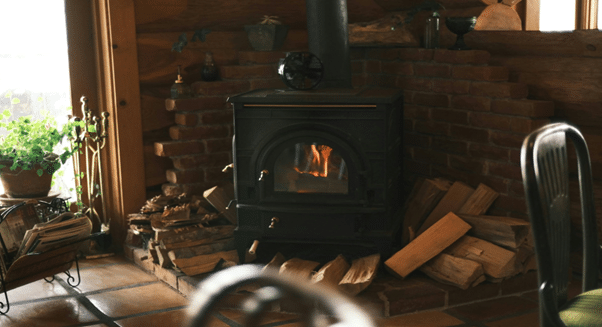Table of Contents
Wood stoves are making a comeback in American homes, and it’s not just about nostalgia. Modern homeowners are discovering that these heating solutions offer a compelling mix of cost savings, energy independence, and aesthetic appeal that fits surprisingly well with contemporary design.
The numbers tell the story. With natural gas and electricity prices fluctuating wildly over the past few years, more families are looking for alternatives that give them control over their heating costs. A cord of wood can heat a home for weeks at a fraction of the cost of running electric baseboards or a gas furnace. For those living in rural areas or regions where power outages are common, a wood stove provides reliable heat when the grid goes down.
Why Wood Stoves Work in Modern Spaces
Today’s wood stoves bear little resemblance to the bulky, smoke-belching units from decades past. New EPA-certified models burn cleaner and more efficiently, extracting more heat from every log while producing minimal emissions. These stoves can heat 1,500 to 2,000 square feet with ease, making them viable primary heat sources for many homes.
The design evolution has been just as dramatic. Sleek steel models with glass doors fit seamlessly into minimalist interiors, while classic cast iron options add character to farmhouse-style spaces. Manufacturers now offer finishes in matte black, brushed steel, and even enamel colors that work with any decor scheme.
Installation Considerations
Getting a wood stove up and running requires proper planning. Building codes across most states mandate specific clearances from walls, floors, and combustible materials. The installation process typically involves cutting through a ceiling or wall and running a proper venting system.
This is where chimney pipes kits come into play. These pre-packaged systems include everything needed for a code-compliant installation, from the stove connector to the roof support and cap. They take the guesswork out of sizing and component compatibility.
For homes with existing chimneys, the situation gets more complex. Older masonry chimneys often need upgrading to handle modern wood stoves safely. Many building inspectors now require a chimney liner when connecting a new stove to an existing chimney. These stainless steel liners protect the chimney structure from heat and corrosion while improving draft performance.
Choosing the Right Components
Not all chimney pipe is created equal. The quality of your venting system directly impacts safety, efficiency, and maintenance requirements. Single-wall pipe is adequate for short interior runs where clearance isn’t an issue, but double-wall or triple-wall insulated pipe provides better performance and allows for reduced clearances to combustibles.
When selecting components, matching them to your specific stove model matters. The manufacturer’s installation manual will specify pipe diameter, typically 6 or 8 inches, and minimum height requirements for proper draft. Cutting corners on venting is false economy. A well-designed system with best chimney pipes for wood stoves pays for itself in fuel efficiency and reduced creosote buildup.
The Practical Reality
Operating a wood stove isn’t entirely hands-off. You’ll need to source, split, and store firewood. Seasoned hardwood burns best, meaning wood that’s been cut and dried for at least six months. Many homeowners find this aspect appealing rather than burdensome. There’s something satisfying about stacking a cord of wood, knowing you’ve got months of heat secured.
Regular maintenance keeps things running smoothly. Cleaning ashes from the firebox weekly, inspecting door gaskets, and having the chimney swept annually prevents problems. Most chimney fires start from creosote buildup, making that annual cleaning a necessity rather than a suggestion.
The Financial Equation
The upfront cost of a wood stove installation ranges from $3,000 to $8,000, depending on the stove model and complexity of the installation. That includes the stove, all venting components, hearth pad, and professional installation. It’s a significant investment, but one that starts paying returns immediately through lower heating bills.
In regions where firewood is abundant and inexpensive, the payback period can be as short as two or three winters. Even in areas where firewood costs more, the savings compared to oil or electric heat make wood stoves economically attractive. Many homeowners also appreciate that firewood prices tend to be more stable than fossil fuel costs.
Design Integration
Placing a wood stove requires thought beyond technical requirements. The stove becomes a focal point, so location matters. Corner installations maximize usable floor space while providing good heat distribution. Freestanding models on a tiled or stone hearth create a strong visual statement in open-concept living areas.
The surrounding materials matter too. A simple stone or tile hearth pad protects flooring while adding texture. Some homeowners go further, building accent walls of brick or stacked stone behind the stove. The key is balancing the rustic element of the stove with the overall design aesthetic.
More Than Just Heat
Beyond the practical benefits, wood stoves change how people experience their homes. The radiant warmth feels different from forced air, creating cozy zones around the stove. The visual element of a fire burning behind glass adds ambiance that thermostats can’t replicate.
For families, gathering around the wood stove becomes a natural evening ritual. Kids do homework in its warm glow. Adults read or work on laptops nearby. The stove becomes a hub of activity in a way that central heating vents never could.
As more Americans look for ways to reduce dependence on utility companies and take control of their energy costs, wood stoves offer a proven solution that’s been refined for modern living. With proper installation, quality components, and regular maintenance, a wood stove can provide decades of reliable, economical heat while adding character and warmth to any home.


